confrontaciones
confrontaciones on Gentrification
1. On Banishment: Against the Gentrifiers
Let’s talk about who the police serve.
Yes, they protect the institution of whiteness, ever since they got rebranded from the fugitive slave patrols. And yes, they protect the capitalists who write the laws and the prestige of the entire imperial apparatus that carries them out.
But to ground our struggles, we have to be specific. Because in today’s so-called Silicon Valley, there is a force so strong it pulls on every piece of the terrain of struggle.
The truth is we are being decimated. Our neighborhoods, our communities, all the pieces of our lives that make them worth living. Every day, more of us are priced out—to Arizona, to Idaho, to the Central Valley, to the streets. The rents keep rising, the pay stays the same, and there isn’t enough money to go around.
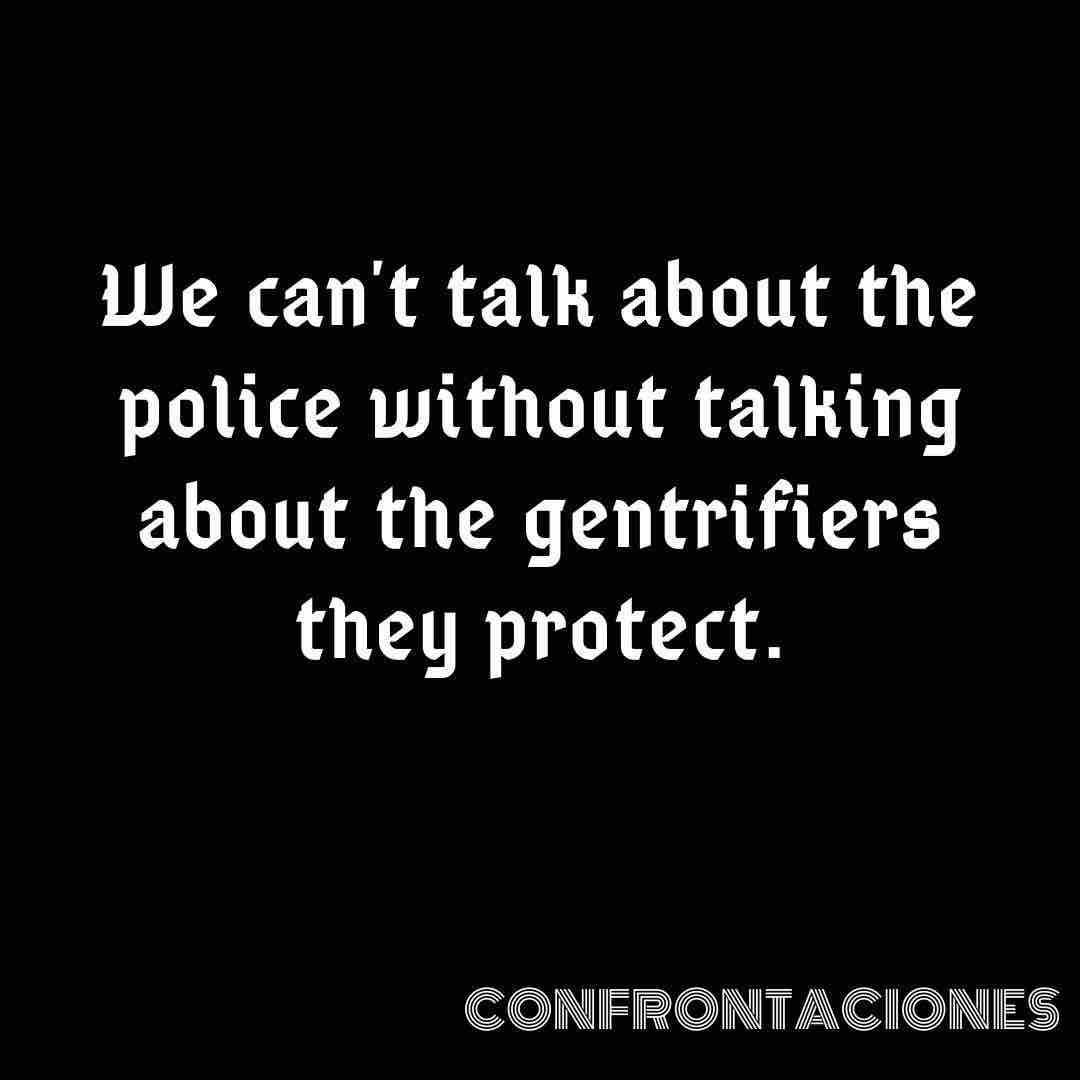
But what if the problem isn’t a lack of money, but an excess? Because San José isn’t a poor city. Actually, if you look at how much money the people who live here have, it’s the richest city in the United States. And the people who move in are always richer than the people they replace.
Gentrification is the process by which working people—proles—get forced out of entire neighborhoods and cities, displaced by a rising cost of living. Landlords keep raising the rents because there are richer and whiter people who can afford to pay them, as long as they get rid of us first. In some cities, those new richer replacements work for big banks or universities. In the “Silicon Valley,” they mostly work as techies.
There was a time when big business needed us around. They needed our parents and grandparents to move to the cities as workers for microchip factories and canneries. Our ancestors were promised that in exchange for their labor, they could call a part of these cities their homes. The worst parts, true, but a part all the same. So it happened that many of them gave up their languages and cultures and identities as part of the deal, that in exchange for all this they would be able to rent a tiny piece of America. And then these cities became our homes, too.
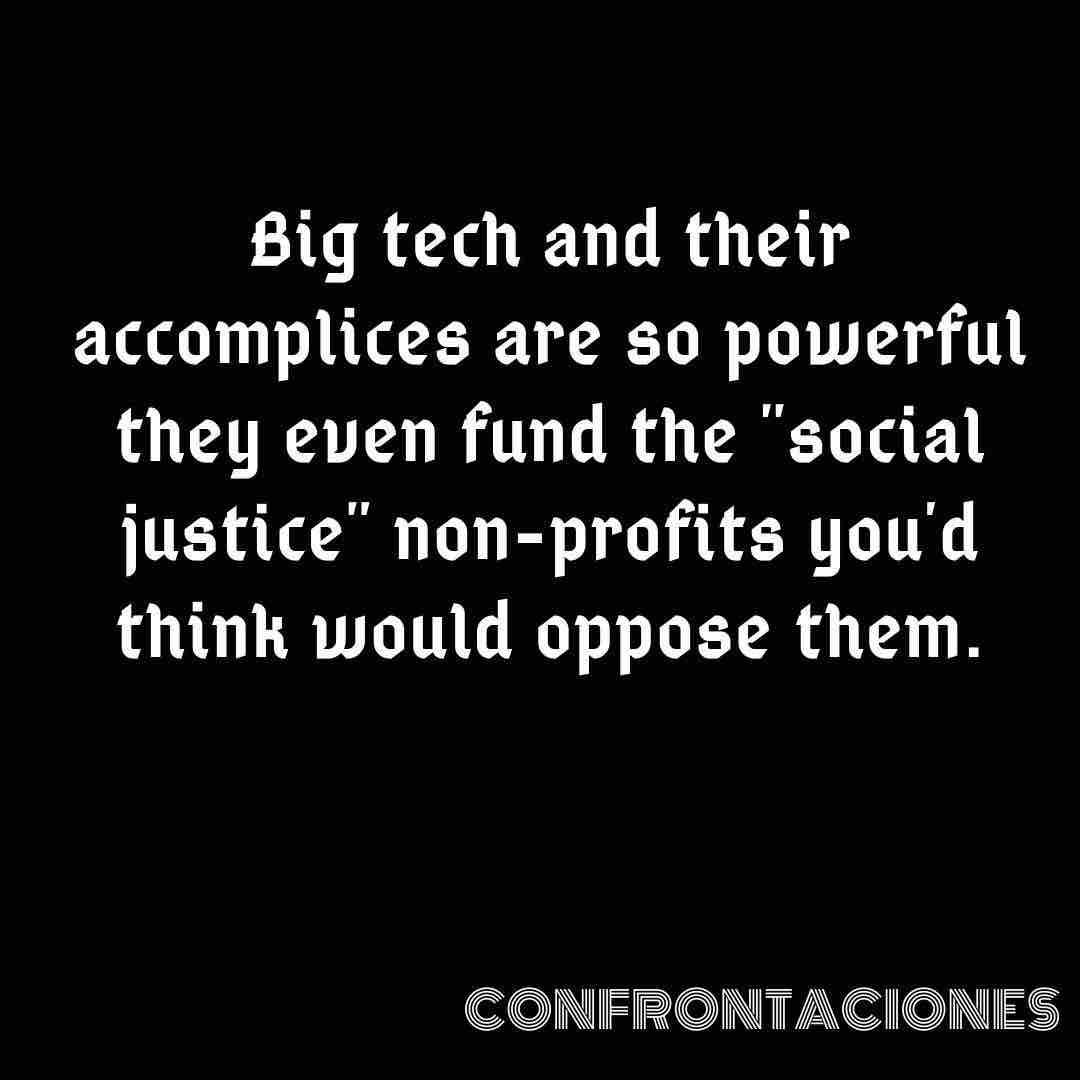
Or so we were told. But the factories are gone now, and the deal was betrayed. The big capitalists don’t need masses of sweatshop workers making microchips in Silicon Valley, because they found that they could pay sweatshop workers in Bangladesh and China and Ciudad Juárez even less.
What makes big business the most bucks today is for us to be gentrified out and for the winners of what they call the “New Economy” to take our place—the bankers, the techies, and the yuppies who are the ones making the real money for the big companies. Their New Economy might have a use for us cleaning their houses or serving their food, but it would just as well see us dying on the streets.
And since it’s big tech making the real money in San José, it’s big tech calling the shots. Combined, big tech firms like Google and Apple have over a trillion dollars, not in investments or stock market value but in actual liquid cash stored in their offshore bank accounts.
They’re more powerful and wealthy than most countries, so ruling in a single city like San José is nothing to them.
So we can’t talk about politics and power in our city without talking about gentrification.
We can’t talk about police brutality without understanding the gentrifiers it protects.
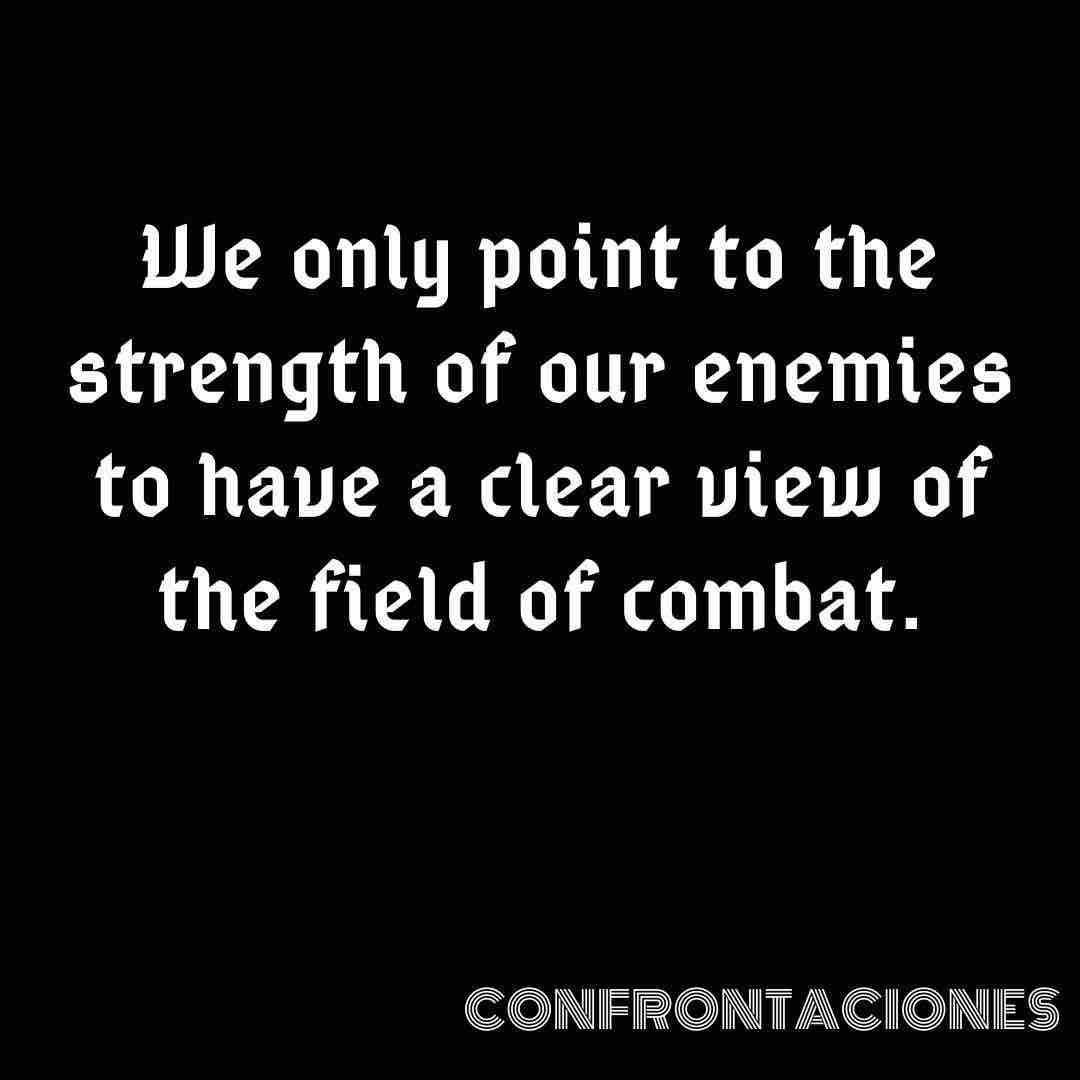
Big tech and their accomplices are so powerful that in today’s Silicon Valley, they even fund the “social justice” non-profits that you’d think would oppose them.
We don’t point out the power of our enemies to inspire hopelessness. Hopeless and helpless is how they want us to feel. They want us to believe that it’s our fault we can’t afford the rent, that maybe if we’d been born richer or whiter or got our papers right or hadn’t dropped out then we too could afford to stay, too.
They want us hopeless because the hopeless only pray for salvation and wait. We are done waiting. We know it can’t go on, and we know that even in the so-called “Silicon Valley” there are more of us than there are of them. We know that we live in revolutionary times, and we know what home and liberation are worth.
We only point to the power of our enemies, then, to have a clear view of the field of combat. We point to the reality of our situation so that we and others like us might find our strength. We know that what little we’ve been given in their shit society was won by the struggle of those who came before us, and we’re glad to have you with us as we fight for everything else.
– An anonymous prole
2. On Pacification: Against the Pigs
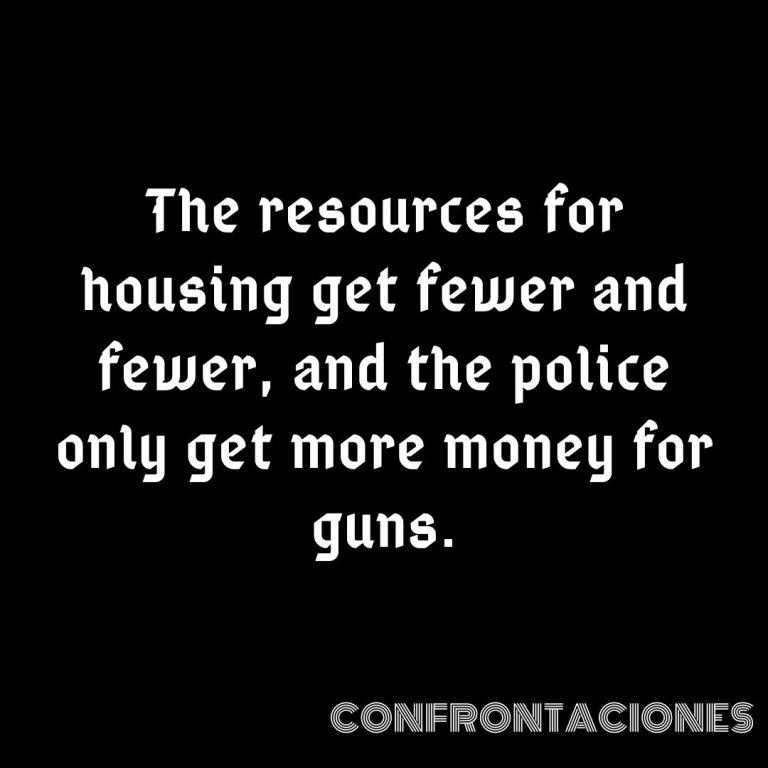
For the 2019–2020 year, San Jose allocated over 40% of its departmental budget to the police: $446 million dollars. That’s 759 times what they allocated for housing and over $400 for each and every resident of the city.
San Jose has spent over $100,000 less on housing each year since 2017, but the amount spent on police only grew. (San Jose’s current budget proposal would cut police funding by a measly 1.5% for next year.)
In this period of time, from 2017 to 2020, thousands of people were forced from the Bay Area by rising rents: in the period just before, from 2010 to 2016, 1.5 million people were displaced. Why does the city focus on increasing police funding as scores of residents are displaced? Because in 2016 the pigs executed Anthony Nuñez in his house and as the corpses of victims of police brutality are laid in the ground their surviving family members are priced out of their homes. But the resources for housing get fewer and fewer, and the police only ever have more money for guns.
Perhaps it’s an oversight, some astounding ignorance or unseen biases or honest mistake on the part of the highly-educated bureaucrats and politicians who run our cities. In that case, perhaps if we could just speak truth to power, say the right words at the right time in the right white tone of voice we could finally get them to realize their priorities are misplaced. It would be on us to find those magical sentences to get them to realize the error of their ways and the fault of not finding them would be, in part, ours.
Or maybe it’s just a fucking plan.
We’ve argued that gentrification and rising property values touch every piece of the social struggle in San Jose, just as in cities across the nation. Fear of poor Black and brown people, violence, and “gangs” is the only thing that’s kept many neighborhoods even a little affordable. So if a city realizes that replacing us with high-paid technical workers is how they make the most money, it makes perfect sense that funding for housing decreases just as money for policing goes up.
The job of the police in gentrifying cities is pacification: to import as much military weaponry as possible into working class Black and brown neighborhoods, to train police to occupy neighborhoods the same way the military does abroad (would love an example if this. I’ll try to find one), to impose a “peace” that will make our streets safe and palatable for our replacements and profitable for the landowners. The cost of this peace is our displacement and death. The cost of their peace is blood in the streets.
So those yelling for “non-violence” at protests better save some breath for the cops buying armored personnel carriers and AR-15s. Those denouncing property destruction better have equal condemnation for those being forced out of their childhood homes. Those who clamor for “civil discourse” better be showing up at eviction court.
We don’t think police brutality is some aberration of a good system, that if we just got the right politicians at the top that all the cops would change who we see them to be every day. Because what’s motivating the police isn’t bad apples or bad ideas but cold hard cash and interests. Because we know the whole damn system is indeed guilty as hell.
Struggle against the police means struggle against the people they work for. Struggle against the capitalists and gentrifiers means struggle against the police that keep them safe and put us in early graves.
And between the pigs and the people, between oppression and liberation, there is another sector whose role is confused, even by many of those performing it. Just like all sectors, it is twisted by the centripetal force of displacement and profit. Though it may see itself as against the pigs or at least the upper limits of their brutality, its fundamental role in the system is pacification all the same. We will return to them in the final piece of our series.
3. On Retreat: Against the NPIC
“Recent experiences have shown the effectiveness of using money to win popular support and further the interests and goals of units conducting counterinsurgency operations…
When used effectively, and with an end state in mind, money can be an effective means to mobilize public support for the counterinsurgent’s cause and further alienate the insurgents from the population.”
— US Army, “Tactics in Counterinsurgency,” FM 3–24.2
“No one is going to give you the education you need to overthrow them.”
— Assata Shakur
So much of the world around us is consumed by the non-profit industrial complex (NPIC). This non-governmental but in many ways state-aligned sector launders stolen wealth from tech companies that litter these occupied territories known as Silicon Valley. From the Silicon Valley Community Foundation to the smallest non-profit, much of their existence relies not on protest but on the crushing of dissent. Tracing the money back to its stolen origins will be a longer endeavor we will have to take on but for now we will focus on the most visible aspects of their repression. Charity in Silicon Valley represents the repressive wing of capital and the state with a benevolent face.
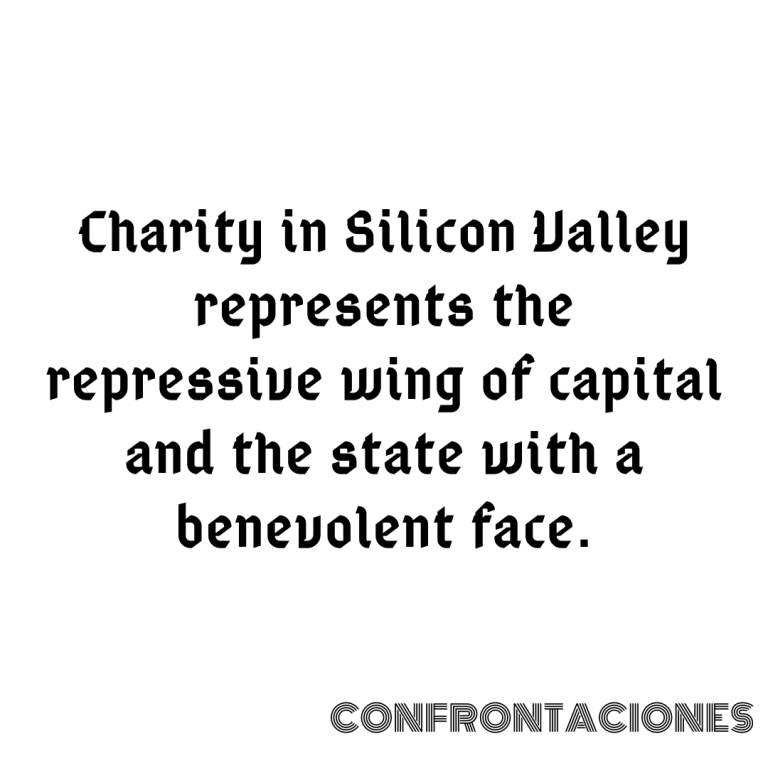
The Military-Industrial Complex refers to the connection between the armed forces, defense contractors, and the state as they collaborate to wring profits from endless war. In the same way, the Bay Area Non-Profit Industrial Complex is a collaboration between government, non-profits, and the tech firms that fund them to ensure the continuance of a bankrupt social peace as displacement and exploitation continue apace.
Take for example the recent protests in downtown San Jose calling for police to be defunded and a reinvestment in existing social services. The initial rupture of May 29th as our comrade has detailed in their report back Revolt and Recuperation: Avenging George Floyd, signaled a break with the existing liberal contract of charity for the poor and safety for the rich. Unaffiliated rebels took to the streets in a clear rebuke of state orders and rehearsed protest by non-profits but the aftermath would see these organizations restore their grip on protest.
One of the most visible examples of this co-optation of righteous prole indignation was the commissioning of murals in the downtown area in partnership with non-profit Local Color. Murals with Black Lives Matter conveying support for the protest were painted in the weeks following the battle of May 29th. Local Color even took to social media and proudly thanked the property management companies in the area for allowing them to paint on plywood erected to protect property from looting. Before taking lead on allowing us to paint and not paint our rage, Local Color consistently partners with the San Jose Downtown Association, notorious for supporting the gentrification of downtown and surrounding areas. What is the possibility of localized revolt when so much of our opposition has been co-opted and repackaged for the consumption of the yuppie gentrifier? Are organizations like Local Color aiding in the destruction of a future that appears to go extinct everyday? If we have to ask our overseers for permission to express our rage, are we really confronting the material conditions we live in or are we decorating their walls for the next downtown promotional brochure?
The city is filled with non-profits that depend on the stolen wealth of Silicon Valley to run their organizations. It is no coincidence then, that in December of 2018, the San Jose city council voted to sell public land to Google while non-profits remained largely silent. There was public outrage but much of it was autonomous organizing by grassroots groups like Serve the People San Jose and not the non-profits that claim to speak for dispossessed proles in the city. Almost two years later, some non-profits now openly celebrate the coming of the Google campus to downtown San Jose. Organizations like Working Partnerships USA have taken the task to attempt to convince proles – people on the Eastside and surrounding neighborhoods on the imagined benefits of displacement and gentrification. Talk about selling snake oil.
There are political differences, and then there is treason to the class.
To understand their conspicuous silence and mumbled lies, you just have to follow the money. The list of big non-profit donors in the Silicon Valley is a laundry list of the people who are actually fucking up the Silicon Valley. The Sobrato Family Fund is the philanthropic arm of a literal real estate firm. The hulking Silicon Valley Community Foundation is a “donor-advised fund,” which means the tech companies who launder their charitable contributions through, get to specify exactly how their money is used—and under what conditions.
So it’s the case that Somos Mayfair, the east side non-profit fighting for anti-displacement policies, is funded by the exact people fueling displacement here and empire globally: eBay, Google, Intel. Sacred Heart gets money from Adobe and Google and HP.
All those people fighting displacement are funded by the displacers. The people critiquing police brutality are paid by the people police brutality protects. It’s not to say that everyone working at these non-profits is a monster. It’s to say that there are strings attached, and that power-hungry corporations don’t turn into saints when it’s time for a few charitable donations. They fund the resistance they want to control.
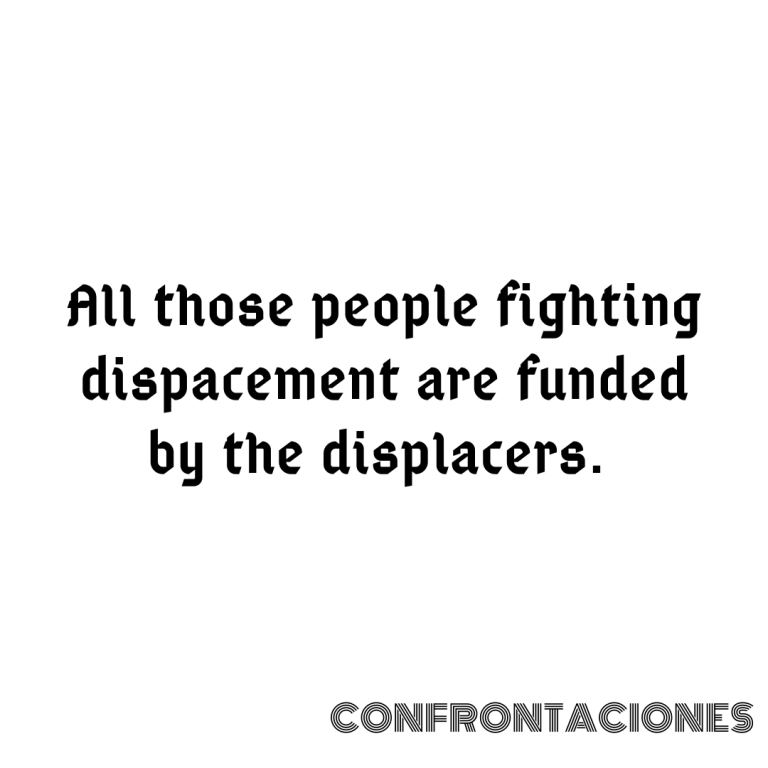
A few years ago, proles in the Bay were blocking tech busses and knocking the Google glasses off techies in bars. Big Tech went and bought themselves a more manageable opposition with some investments in “social justice” and now our “leaders” tell us to wait, to ask, to beg.
There’s a long list of non-profits that devour the energy of movements only to repeat the tired script of voting and civic participation. As all-encompassing as their authority on dissent appears, this is a small universe of technocrats with little influence outside their circles of happy hour buddies. Just days before the May 29th rebellion, Working Partnerships sent their subscribers a call to attend a car rally demanding the city do more for workers affected by the virus but the lack of social media activity indicates there was little engagement by proles in the city. As power goes, we know that the lack of participants in their rally doesn’t mean that they do not have access to the local political class; indeed, they are bound by shared interests.
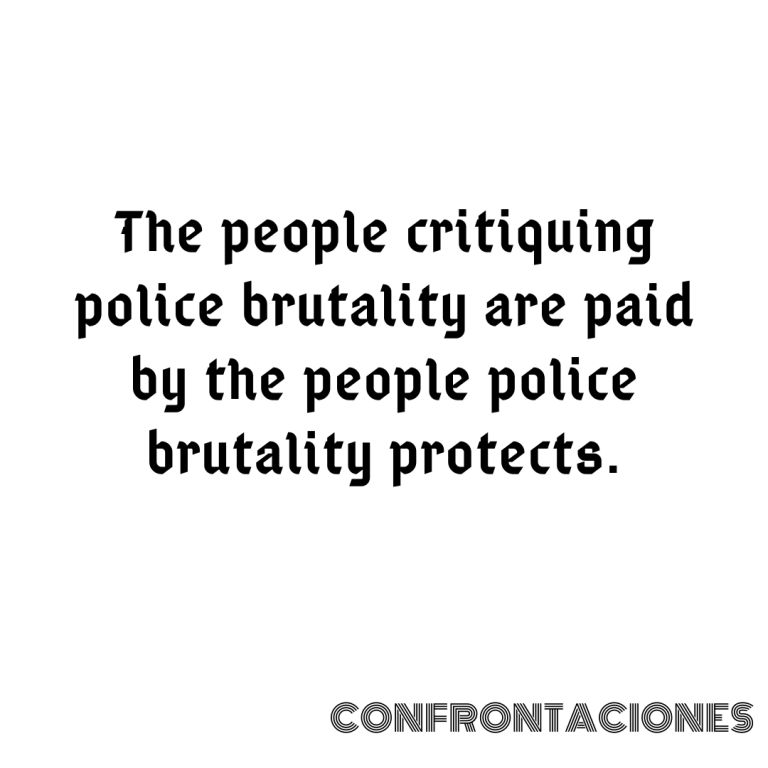
The May 29th rebellion sent a chilling message to the local political class, SJPD, and the non-profits that do more to crush dissent than provide the direct material aid proles need. Far from feeling despair, we see this rupture as the unveiling of what we had suspected for years but had not been able to articulate yet. For these non-profits, there is nowhere to hide their commitment and investments in the status quo—city grants aren’t awarded to those setting dumpsters on fire. But what if those lit dumpsters can wring more concessions from the politicos than any combination of picket signs and petition signatures ever could? Even the liberals’ treasured votes were won by prole rebellion; Congress only got the nerve to pass the Voting Rights Act after Detroit burned.
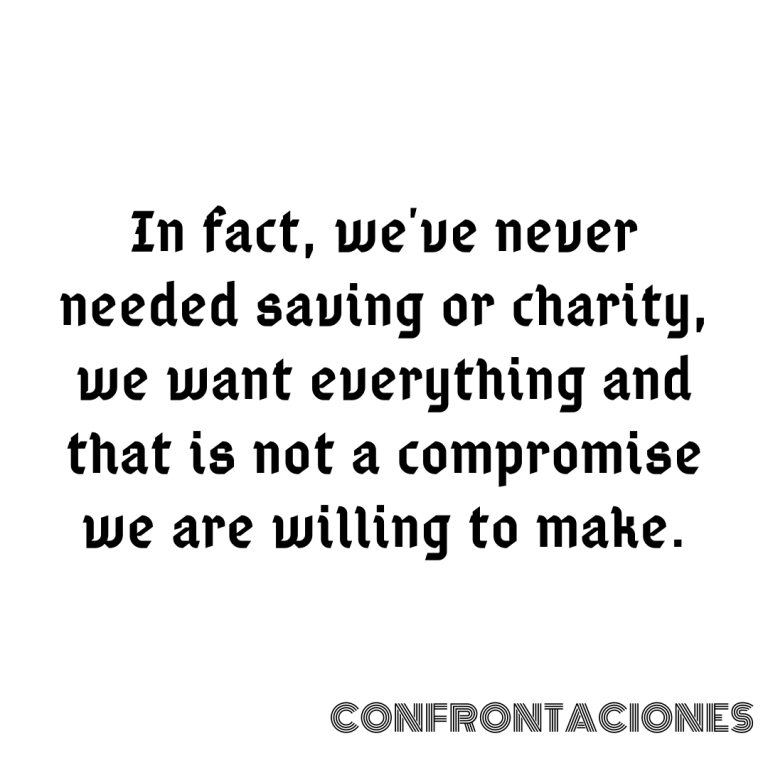
Our struggle is not the same as theirs and we aren’t looking for an alliance. In fact, we’ve never needed saving or charity, we want everything and that is not a compromise we are willing to make. Against the non-profit industrial complex; for a praxis of autonomous leaderless confrontations. Against those who would turn our rage and blood into grants and press releases; against retreat. In the pointed words of Dylan Rodriguez, “…perhaps it is time that we formulate critical strategies that fully comprehend the NPIC as the institutionalization of a relation of dominance and attempt to disrupt and transform the fundamental structures and principles of a white supremacist US civil society, as the US racists state.”
– a prole with thoughts of liberation
